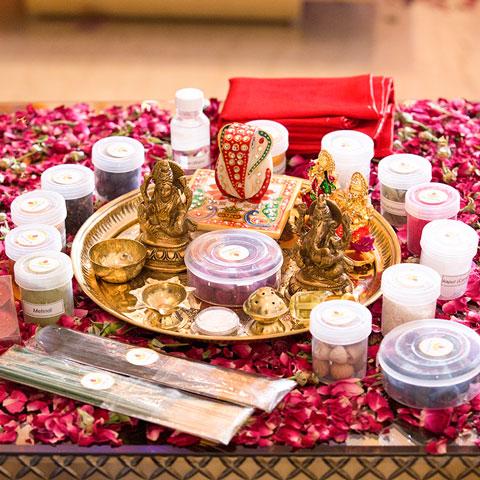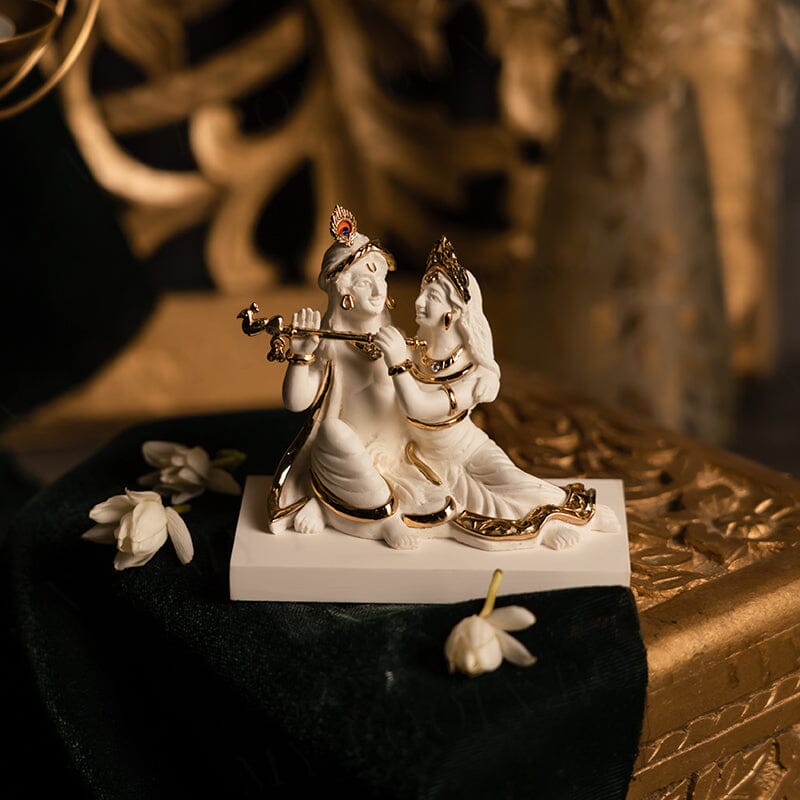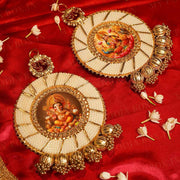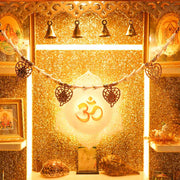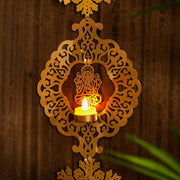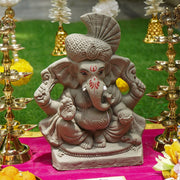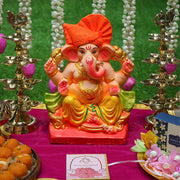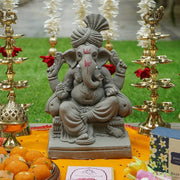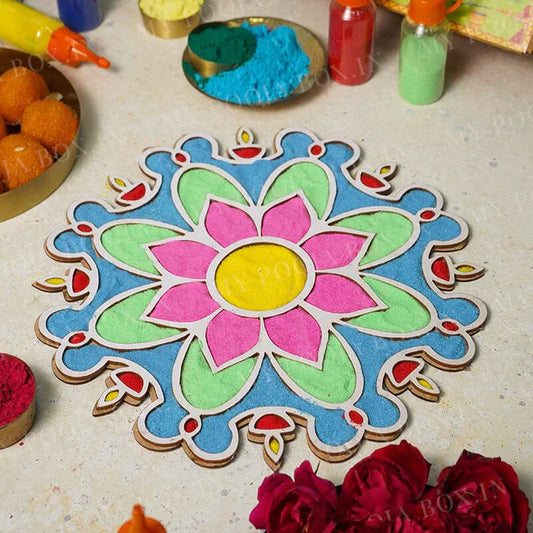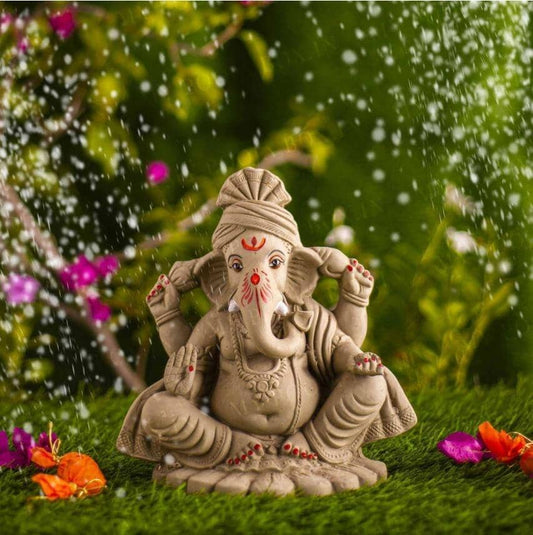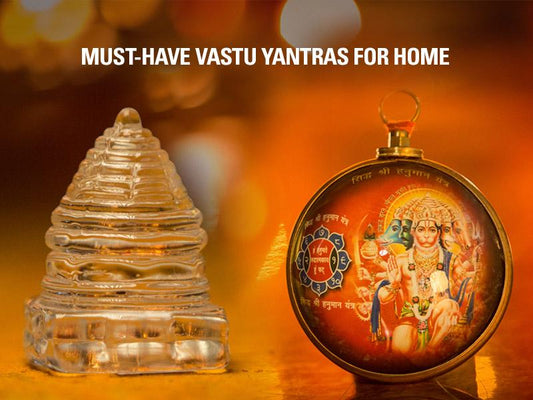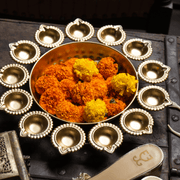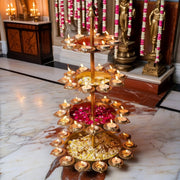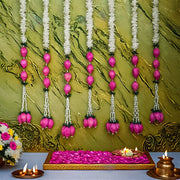Ganesh Chaturthi, is one of the most grand festivals celebrated with enthusiasm and joy for 10 days. Lord Ganesha is one of the Hindu deities who is known as the God of Success and Wisdom. The idol of the holy Lord Ganesha is brought into our homes and worshipped with full devotion. The duration of this festival differs from one and half days, 3 days, 5 days, 7 days, and even 11 days, depending on the place, tradition, and customs of different families.
Lord Ganesha, is deemed to be an important deity and also the Kuladevata of many families. Months and months prior to Ganesh Chaturthi, the beautiful idols of Ganesha are crafted in vibrant colors, adorable poses, and sizes. In various parts of Andhra Pradesh, Karnataka and Maharashtra, this festival is widely celebrated. Apart from India, this auspicious festival is also celebrated with joy, excitement, and joy in Nepal, the USA, Mauritius, and the UK.
Have a glance at the 5 interesting facts about Ganesh Chaturthi that will surprise you.
1. Ganesh Chaturthi was first celebrated in the era of Chhatrapati Shivaji Maharaj
Ganesh Chaturthi was celebrated when Rashtrakuta, Satavahana, and Chalukya ruled between 271 BC and 1190 AD. Chhatrapati Shivaji Maharaj, ruler and founder of the Maratha Empire, celebrated Ganesh Chaturthi with great passion in order to bring people together against the Mughals. Later on, the celebration of Ganesh Chaturthi was carried out by the Peshwa dynasty.
2. Public Ganesh Chaturthi celebration was inaugurated by Bal Gangadhar Tilak in the year 1893
Ganesh Chaturthi was celebrated in-house until 1893, when freedom fighter Bal Gangadhar Tilak transformed the festival into a grand public celebration to unite India against the British. Also, he encouraged huge Ganapati idols and celebrations of this event in public. During Indian independence, Tilak gave Ganesh Chaturthi the right opportunity to bring Brahmins and non-Brahmins together so as to ban British rule.
3. India’s Longest Immersion Procession is carried out at Mumbai’s Lalbaugcha Raja
One of the oldest Mandals in India, Lalbaugcha Raja Mandal, was established in the year 1934 in the locality of Peru Chawl. In 1932, the Chawl was shut down and the fishermen & vendors promised to set up Ganpati at this place. In 1935, Lalbaugcha Raja was first established by fishermen. In Mumbai, the Kambli family designed and recreated Ganpati idols. Lalbaugcha Raja hosts the most grand Ganpati Visarjan in India, whose procession can be witnessed from 10 am in the morning till 8 am the next morning.
4. Nepal, Thailand, China, Cambodia, Japan, and Afghanistan are the countries outside India where Ganesh Chaturthi is celebrated.
The positivity of Lord Ganesha is spread across India. The blessings travel through Nepal, Thailand, China, Cambodia, Japan, and Afghanistan. From area to area, the depiction, Avatars, and idols of Ganesha differ. The beautiful postures of Ganesha with weapons in his arms are quite unique.
Lord Ganesha in Japan is worshipped as‘ Embracing Kangiten', ‘Ganabachi’, ‘Shoten’, and' ‘Binayakaten’. These are the two elephant-headed bodies depicted as male and female embracing each other in a sexual union. Also, it has a presence on the 20,000 Rupee currency note. In Cambodia, from the 7th century, Lord Ganesha was worshipped as the primary God and appeared in an unusual form with a human head.
Moreover, in Thailand, the Thai Buddhists celebrate the birthday of Lord Ganesha on the same day as the Indians celebrate Ganesh Chaturthi. In Thailand, Ganpati Bappa is generally referred to as Phira Phikanet, and is associated with culture and art. It is also a part of Thailand’s department of Fine Arts.
The founder of the Ganpati cult in Tibet was Atisa Dipankara Srijna and Gayadhara, who are said to be the Indian Buddhist religious leaders. One of the Tibetan forms of Lord Ganesha is shown as being trodden under Malakala (a popular Tibetan deity). On the other hand, another form depicts him as the Destroyer of Obstacles, also sometimes dancing.
5. During Ganesh Chaturthi, it is considered unlucky to have sight of the moon.
While you indulge yourself in the zeal of the celebration, make sure you don’t look at the moon. Do you know why? As per the legend, once, while Lord Ganesha was returning from the feast, he rode on Mooshak. On gradually moving forward, the mouse, on seeing the snake, dropped Lord Ganesha on the ground. On watching Lord Ganesha manage himself with his big belly, the Moon poked fun at this overall appearance.
Subsequently, Lord Ganesha then cursed the Moon (Chandra) that whoever looks at the latter of Ganesh Chaturthi will face false allegations, or welcome Mithya Dosh. Finally, the Moon, on hearing the punishment, decided to apologise to the Lord. To relieve Chandra from the curse, Lord Ganpati said that human beings could have a glimpse of the moon every day, except for ‘Bhadrapada Chaturthi’.





